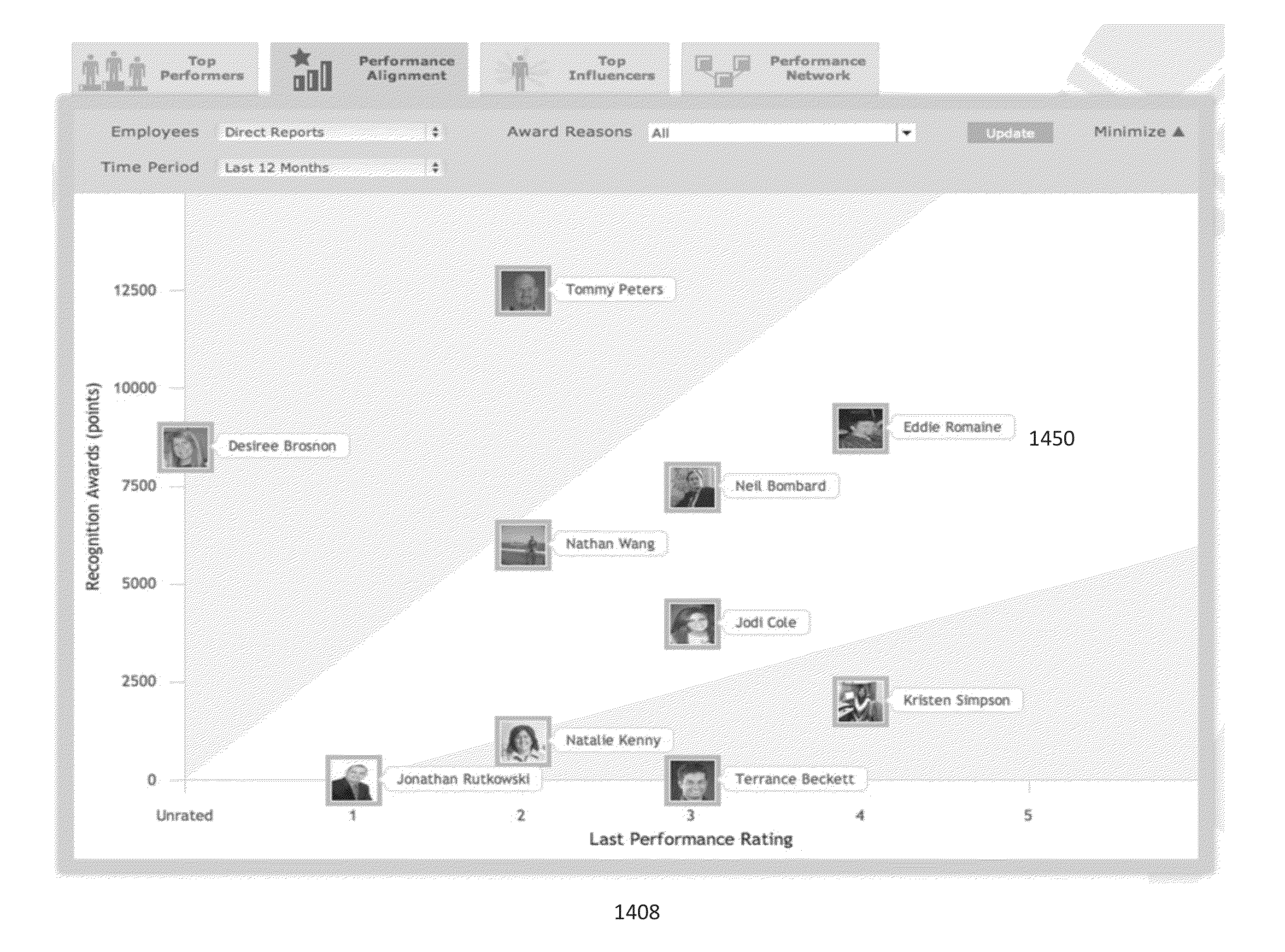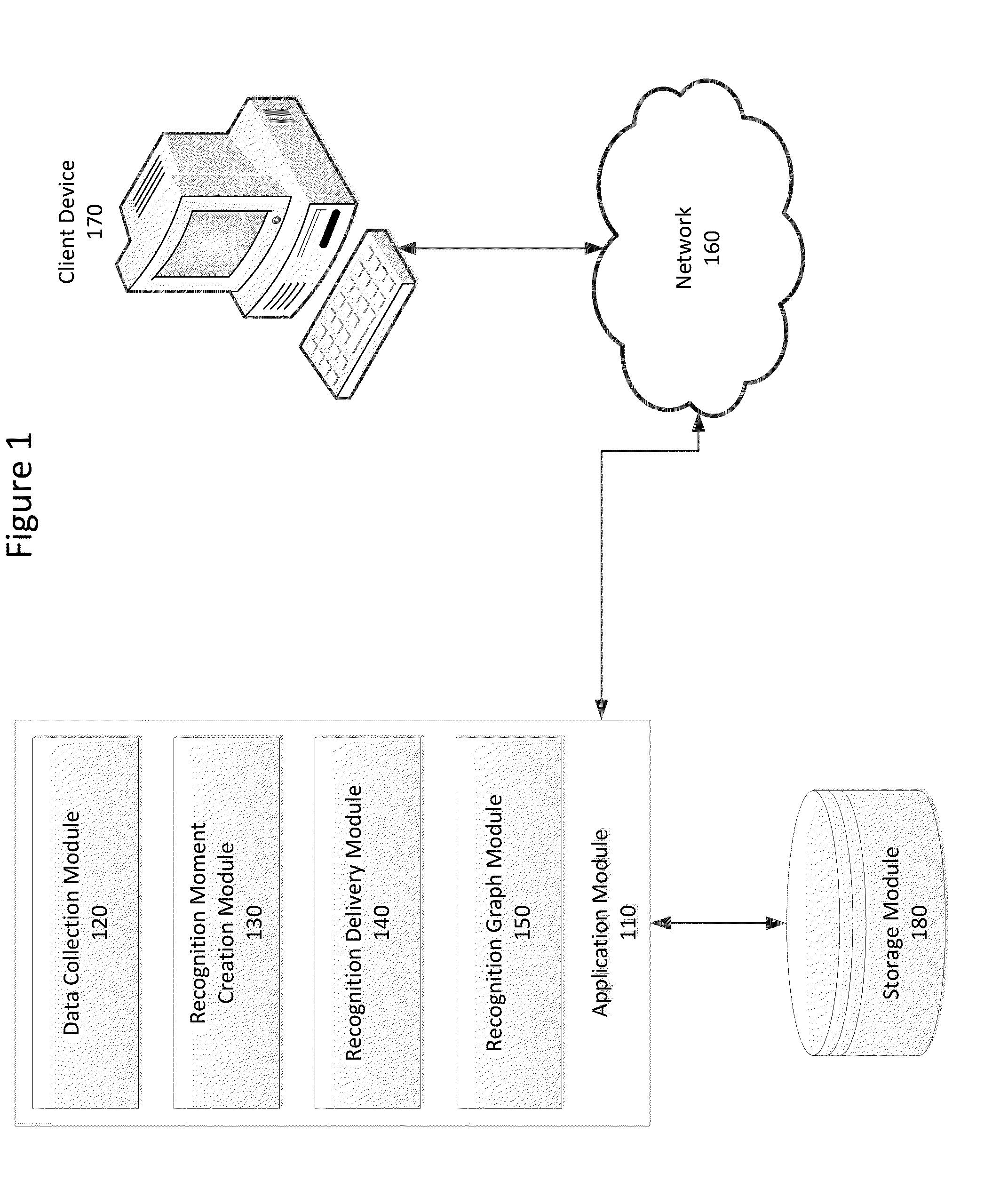While these programs do provide employees with feedback from time-to-time, these solutions are deeply flawed and provide limited benefits.
However, these performance reviews are flawed as they fail to provide an accurate, ongoing assessment of an employee's potential, performance, and value to the company.
As a result, only a limited portion of the employee's
impact may be realized through the collection of comments provided by only the employee's direct supervisor.
Therefore, the data collected and relied upon may not adequately provide a meaningful and complete picture in determining the employee's performance and
impact with respect to the company.
Such opinions, while important, may be inaccurate or flawed.
Moreover, the comments and feedback collected from the performance reviews are limited to a
single point in time.
While such feedback theoretically should provide data of the employee's work for the entire review period, the nature of the
single point-in-time review ultimately results in the review of the employee's performance only at the particular review date, potentially ignoring the employee's performance for much of the review period.
By the nature of these reviews, it is also difficult for a manager to recall, much less analyze, the performance of the employee over such a long period and from so far in the past.
Yet, these performance reviews are dependent on such subjective and potentially inaccurate data.
Even if the reviews are assumed to be accurate at the time of writing to cover the entire review period, it often takes weeks or months for feedback to be provided to the employee.
As a result, by the time the employee receives recognitions or comments, the feedback received is likely out of date.
Point-in-time performance reviews also limit employers from reviewing the employees at any desired time.
However, like performance reviews, these recognition programs also provide limited benefits.
For instance, these programs are typically limited to only managers or senior managers nominating their employees for quarterly or annual awards whereby the winners are selected by a committee with only a small percentage of the entire workforce (e.g., less than 10%) receiving any type of recognition award on an annual basis.
By failing to provide full participation to the workforce with a
free flow of recognition moments, these programs fail to identify relationships among employees and various other organizational members and fail to fully incentivize beneficial employee actions.
Furthermore, typical employee recognition programs fail to capture all of an employee's “recognition moments,” such as those opportunities to “recognize” an employee's contributions or efforts and improve the organizational climate and culture, as well as promote the employee's actions that initiated the recognition moment.
Indeed, the typical recognition programs provide a minimal amount of recognition and fail to, therefore, drive improvement in behavior and culture across the entire workforce.
While reviews, plaques and bonuses provide employers with some insight into the employee's impact, this limited set of data fails to capture a plethora of other meaningful
metrics of the employees at the individual, team and organizational level.
Even when data is provided, it is often difficult to understand and it fails to provide a comprehensive picture of the employee's performance.
Moreover, they fail to provide employers with insight into the performance, impact and potential of each employee with respect to other employees within the organization.
However, currently available recognition programs and point-in-time reviews do not provide employers with such important information.
Yet, current solutions fail to fully provide companies with these potential benefits.
 Login to View More
Login to View More  Login to View More
Login to View More 


